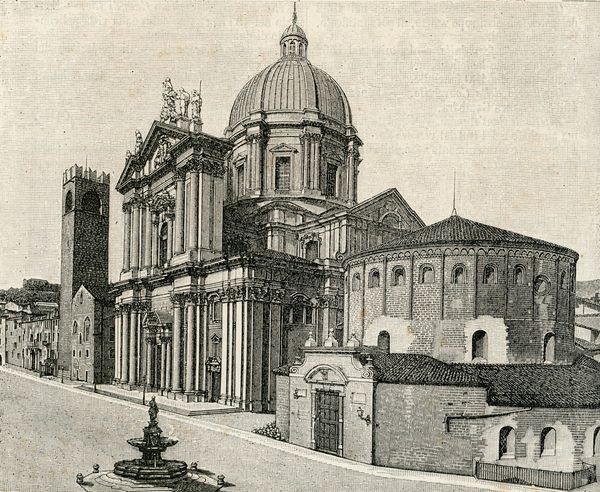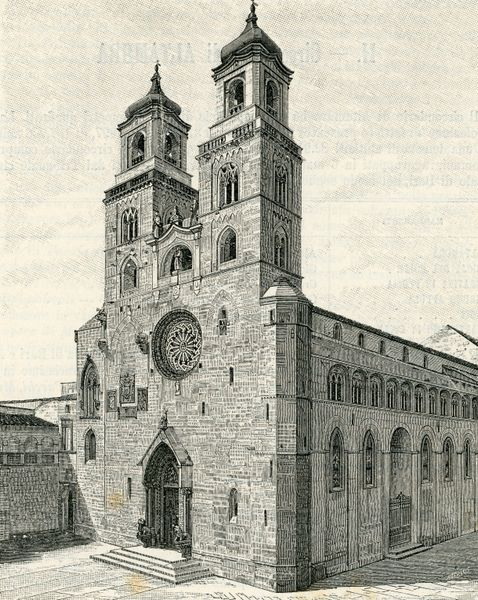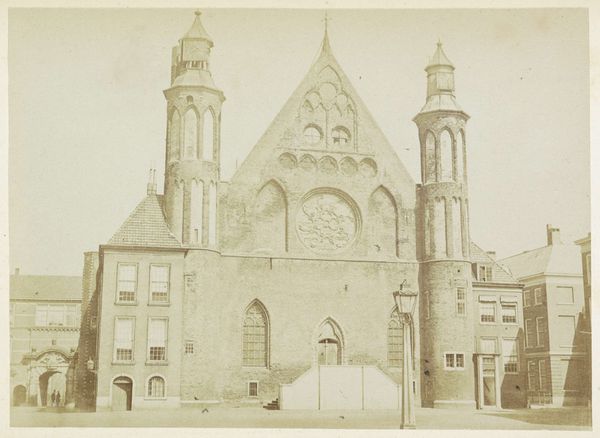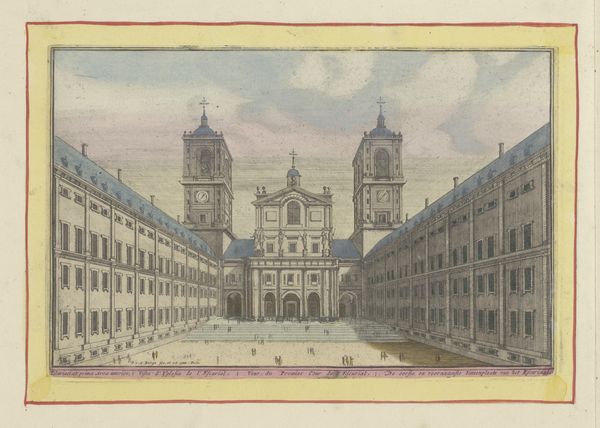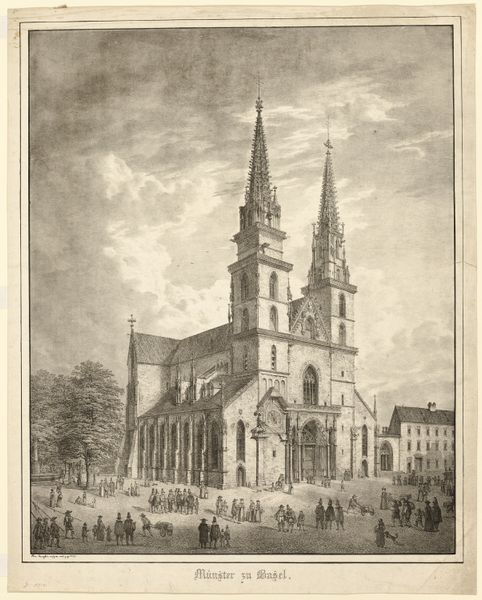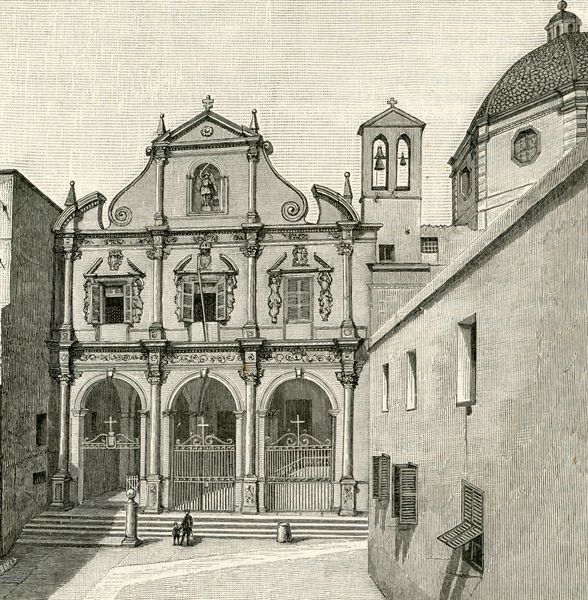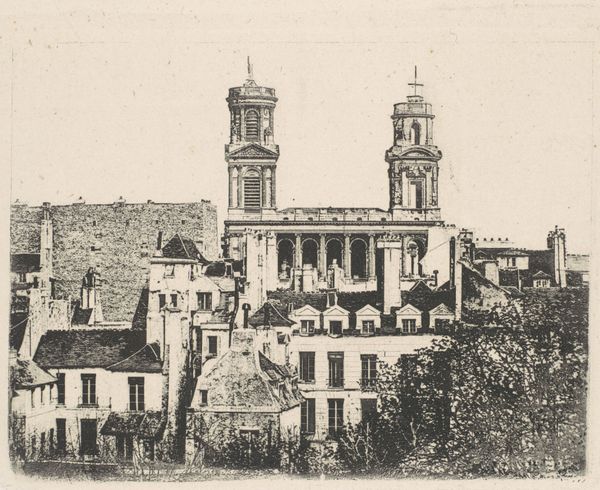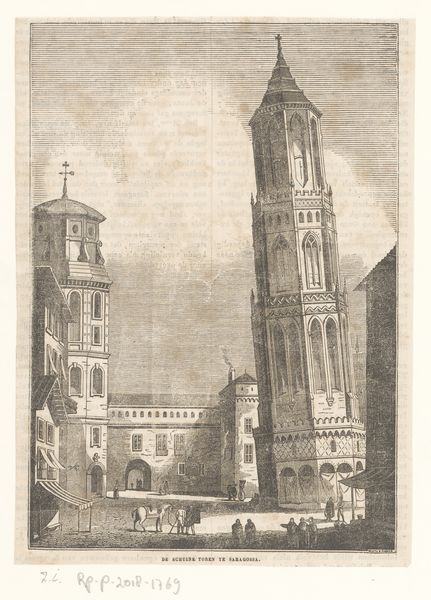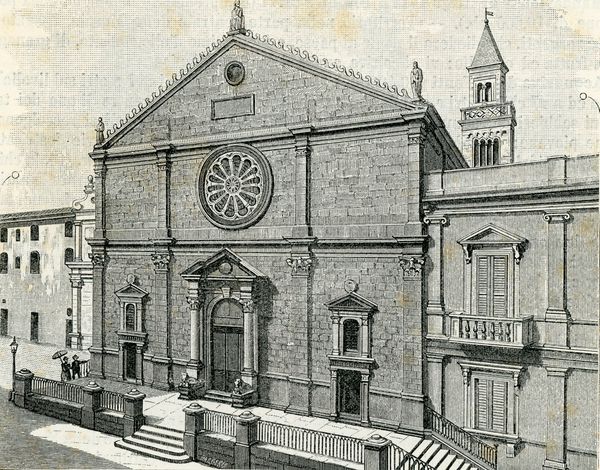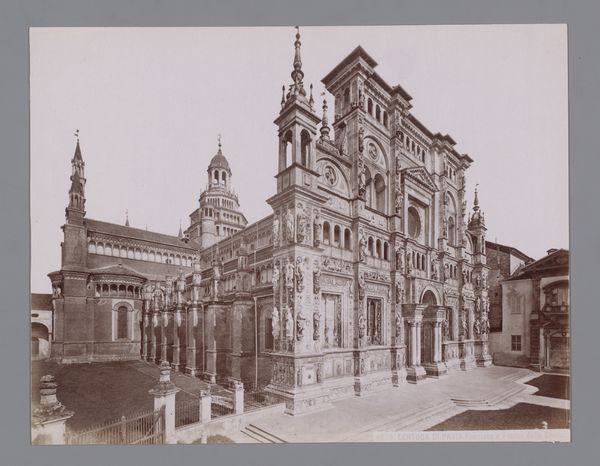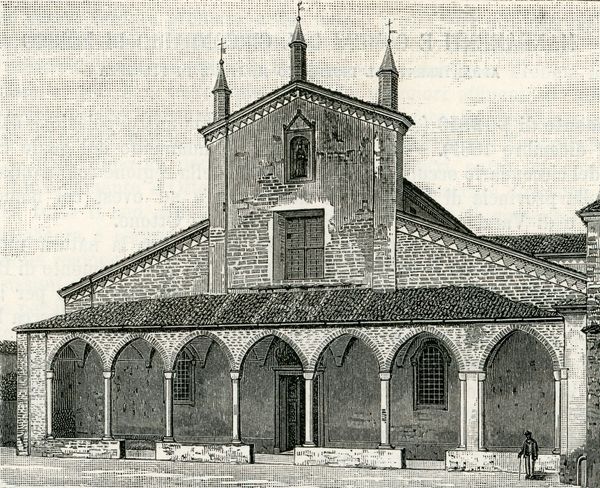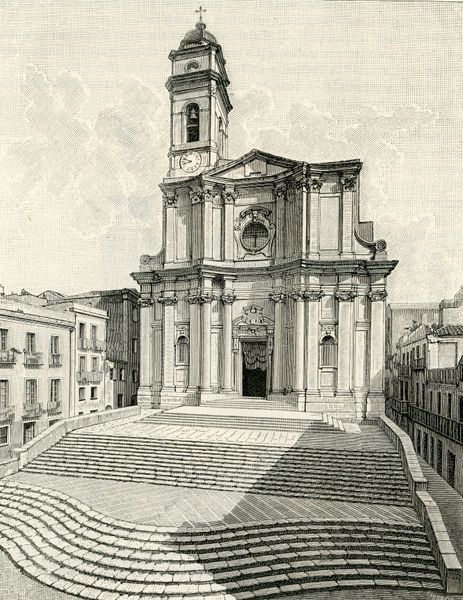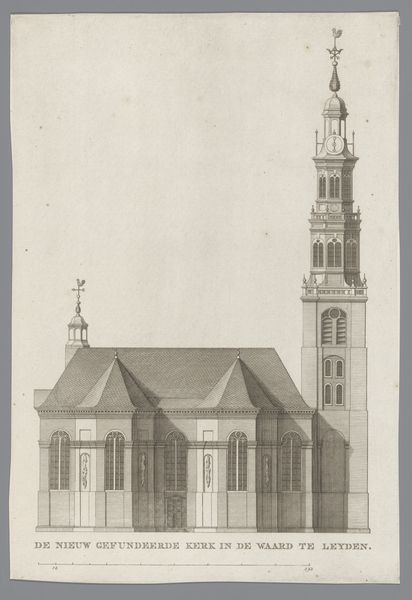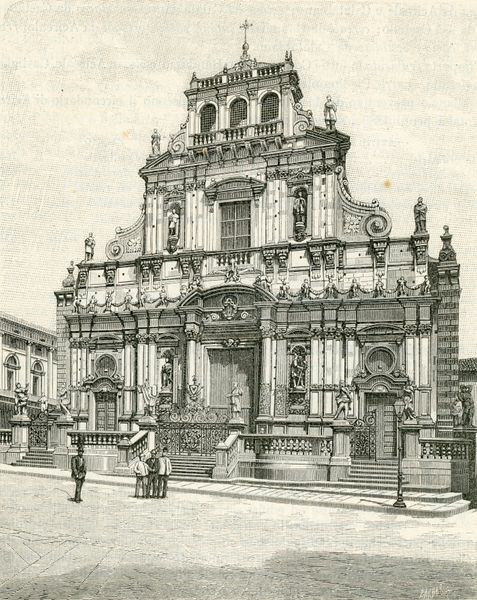
drawing, print, engraving, architecture
#
architectural sketch
#
drawing
#
perspective drawing
#
architectural landscape
#
medieval
# print
#
landscape
#
architecture mock-up
#
perspective
#
historic architecture
#
traditional architecture
#
romanesque
#
architectural drawing
#
architecture drawing
#
architectural proposal
#
engraving
#
architecture
#
historical building
Copyright: Public domain
Curator: Look at Giuseppe Barberis’ "Basilica Di Sant’andrea in Vercelli," created around 1890. It seems to be a print, maybe an engraving, depicting the basilica. Editor: It's so precise! I’m curious about the process that went into creating this image. What can you tell me about how this artwork came to be? Curator: Let's think about the materials. An engraving suggests mass production and dissemination. Barberis isn’t just depicting the basilica; he’s using a *printing* technology of the late 19th century to distribute its image widely. What kind of labor might be involved to carve into the metal plate for printmaking? Editor: A lot, I imagine! It feels almost industrial, juxtaposed against the historical subject matter. Did this technique impact who could view architecture like this? Curator: Exactly! The use of engraving democratizes access to architectural imagery. Before photography became widely available, printed images were crucial for spreading architectural ideas and styles. Do you think that changes our understanding of art and craft during the Industrial Revolution? Editor: Absolutely, because we typically separate architecture from more portable types of images. It almost brings the monumental down to a consumable size, a commodity even. The architecture is reproduced, and I guess so is its historical relevance and the role the Church had within society. It shifts its role and purpose as a representation. Curator: Indeed. It's not just a building anymore; it's a product of industrial capitalism, circulating within a new economy of images. This really makes you wonder, right? Editor: For sure. Seeing this drawing in light of production gives me an understanding that expands beyond traditional interpretations of art. Thanks!
Comments
No comments
Be the first to comment and join the conversation on the ultimate creative platform.
